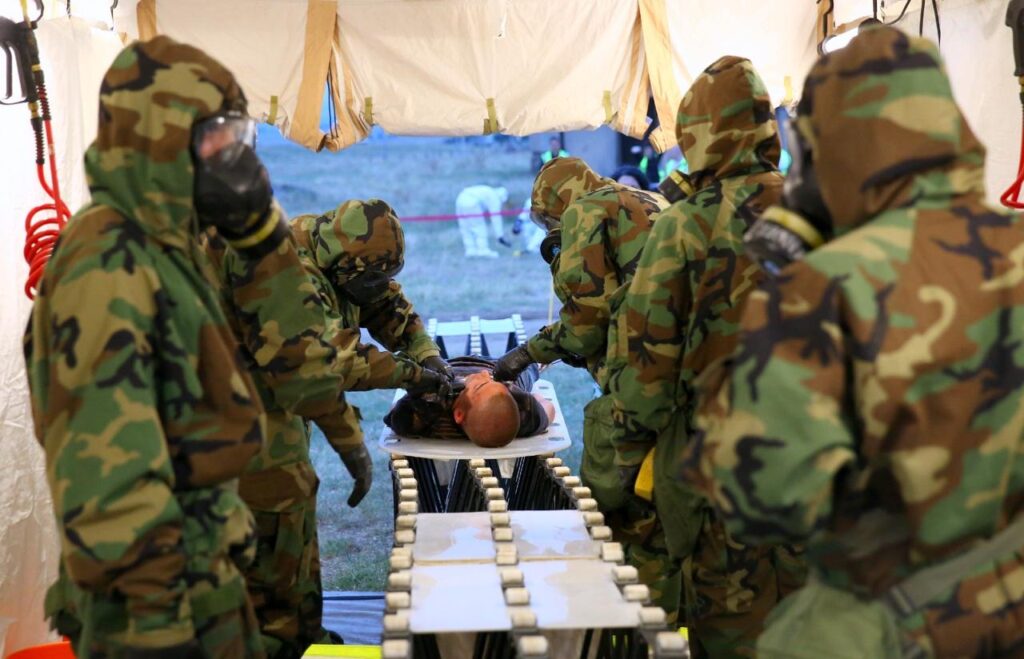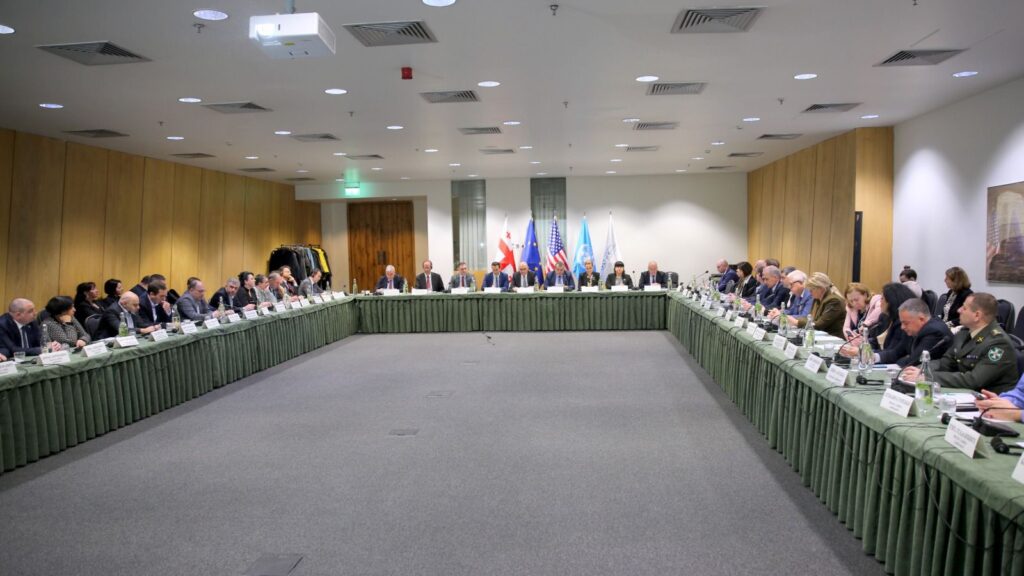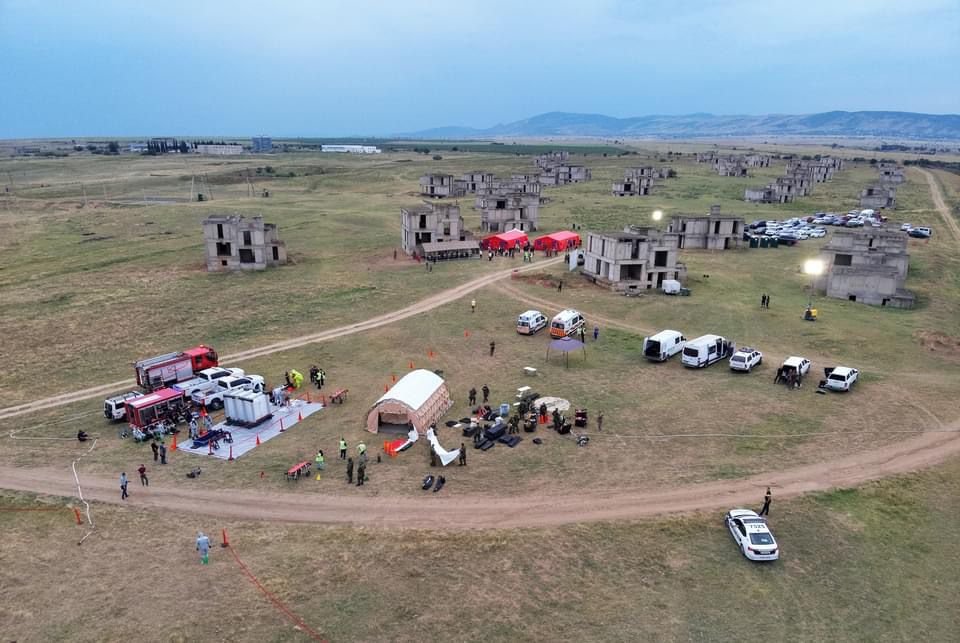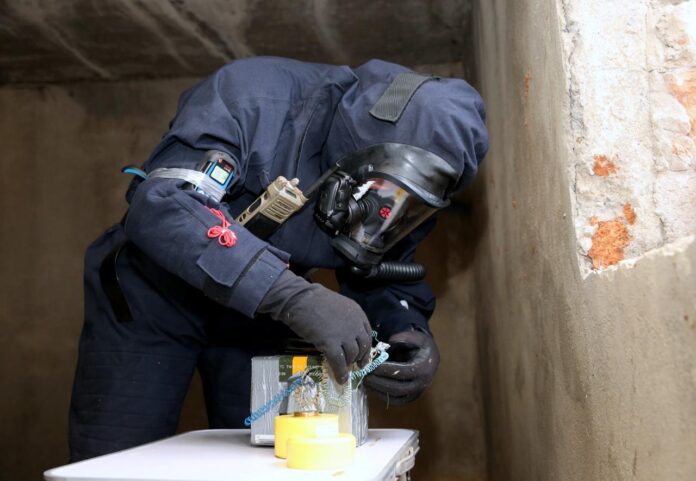By Diana Tsutskiridze
The CBRN National Focal Point of Georgia, Diana Tsutskiridze, discusses how her country addresses emerging non-conventional threats through national coordination and international collaboration.
CBRN threats represent some of the most formidable challenges to global security, public health, and emergency preparedness in the modern world. Therefore, small countries like Georgia need to work especially hard to detect and deter those threats effectively.
Positioned in a geopolitically turbulent region fraught with complexities, Georgia, soon after regaining independence, began combating illegal smuggling of radioactive and nuclear materials while also focusing on strengthening its biosafety and biosecurity measures.
Historically, the country has been an endemic region for particularly dangerous pathogens, posing a significant challenge even for economically strong nations. However, Georgia’s resilience in addressing these biological risks has led to effective and tangible results.

A Model of Effective National Coordination
In 2014 Georgia took a pivotal step in combating CBRN threats by establishing a unified national strategy and creating an interagency coordinating council for combating CBRN threats. This council, chaired by the State Security Service of Georgia, comprises 28 agencies working in tandem to tackle diverse challenges posed by CBRN risks. Its primary responsibilities include the elaboration of the National CBRN Safety and Security Policy, the formulation of specific actions outlined in the national action plan (NAP), monitoring the implementation process, providing progress reports to the government, and initiating relevant laws and regulations.
Currently, Georgia is in the process of finalizing its second National CBRN Threat Reduction Strategy (2021-2030) along with the corresponding NAP for 2024-2026. This is following the successful completion of the previous NAPs for 2021-2023 and 2015-2019.
To ensure effective coordination, the CBRN Council convenes annually to review progress, evaluate the implementation of national policy documents, and address relevant issues pertaining to CBRN safety and security. Council members collaborate to identify and discuss existing gaps, challenges, and specific concerns faced by national agencies in their ongoing efforts to mitigate CBRN risks.
Strategic documents play a crucial role in shaping an effective national coordination mechanism. Beyond serving as a roadmap for internal governance, they also pave the way for fostering regional and international partnerships. These documents are instrumental in facilitating collaboration with donors, enabling targeted support in the CBRN security sector.
The CBRN Threat Reduction Strategy and its respective national action plan are the guiding documents for the national team. We plan the activities according to these documents and coordinate with donors to fill the gaps in the priority areas. For example, late last year in December, the Georgian national team conducted a table-top exercise that corresponded to one of the priorities stated in the NAP. Both documents are dynamic and they are valuable tools for national coordination.
Georgia has extensive experience in organizing donor coordination meetings and has established itself as a key regional hub for hosting international trainings, conferences, and both table-top and field exercises. Over the past decade, the country has hosted a number of significant events, including the CBRN World Congress, the Black Sea Forum for Nuclear Security, the regional field exercise “Lionshield 2018”, the BACAC Conference on Biosecurity 2022, Annual Meeting of the Nuclear Forensics International Technical Working Group 2023, and numerous other high-profile gatherings.

Strategic Regional and International Collaboration
Georgia’s engagement with international organizations, particularly with the European Union’s CBRN Risk Mitigation Centers of Excellence (CoE) initiative, highlights its role in global CBRN security. It is the first country to adopt an NAP within the initiative, and Georgia’s experience since then has been shared with other countries as a model to develop their own national plans.
As the host country for the CoE initiative’s South-East and Eastern Europe (SEEE) Regional Secretariat since 2013, Georgia plays an active role in supporting the EU’s efforts to promote the elaboration of CBRN national action plans across the region. The SEEE Regional Secretariat unites 10 countries and Georgia has been instrumental in coordinating joint projects as well as fostering an integrated regional approach to CBRN risk mitigation.
In addition, Georgia remains a committed member of the G7 Global Partnership against the Spread of Weapons and Materials of Mass Destruction. The country actively participates in working groups and events under the Global Initiative to Combat Nuclear Terrorism, contributing to the global effort to prevent nuclear terrorism.
Georgia is also a signatory to various international conventions and UN frameworks aimed at reducing radiological and nuclear threats. The country maintains effective cooperation with the International Atomic Energy Agency (IAEA), regularly reports to the IAEA’s illicit trafficking database, and continues to implement its national Integrated Nuclear Security Support Plan which serves as a strategic roadmap to strengthen Georgia’s nuclear security capabilities.
Georgia’s commitment to global nuclear security is further reflected in its efforts to align national legislation with international standards. The revision of the Law on Nuclear and Radiation Safety in 2023 represents a significant step in harmonizing domestic policies with global frameworks.

Security Risks in Occupied Territories and the Trafficking of Radioactive Materials
The occupation of the Georgian territories significantly complicates its security environment. Occupied territories, particularly the occupied Abkhazia, are source of security concerns including CBRN threats. One of the primary concerns is ensuring the security of critical sites, such as the Ilia Vekua Sukhumi Institute of Physics and Technology, located in occupied Sukhumi. The lack of effective control over this critical site has raised concern particularly since no international inspections have been carried out, leaving the security situation unclear.
Moreover, the risks of illicit trafficking of radioactive and nuclear materials persist. Since 2006, Georgia has made substantial progress in combating radiological and nuclear material trafficking, with several operations linked to the occupied territories. Georgia’s law enforcement has made significant strides in combating this threat, arresting numerous individuals involved in smuggling operations and seizing dangerous materials.
Conclusion
Georgia’s approach to addressing emerging CBRN threats showcases the country’s resilience and proactive stance in ensuring national security. Through coordinated efforts at the national, regional and international levels, Georgia has made significant strides in mitigating CBRN risks. However, the challenges emanating from the occupied territories and persistent threat of illicit trafficking highlight the need for constant vigilance and effective international cooperation in securing the country’s borders against these evolving risks.
Diana Tsutskiridze is the CBRN National Focal Point of Georgia at the State Security Service of Georgia. Prior to joining the Service, she has worked at the Ministry of Internal Affairs and Ministry of Defense. She has an extensive experience on working the CBRN matters, having worked in this field since 2015. She played a key role in coordinating the development of Georgia’s second CBRN Threat Reduction Strategy, as well as the country’s second and third national action plans.





